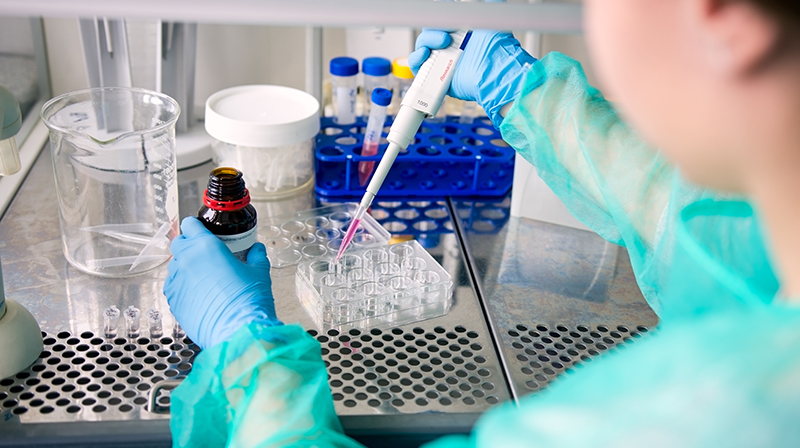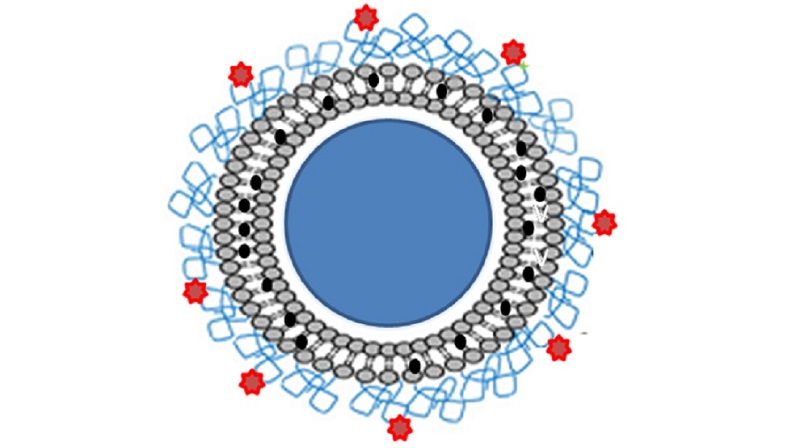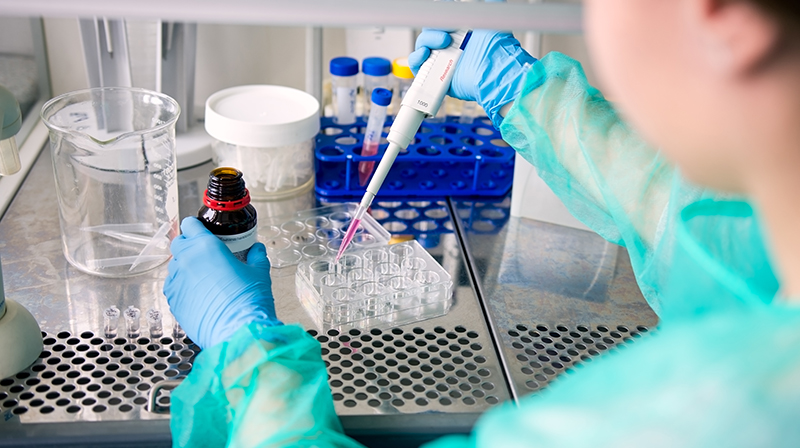
Innovative nanoparticle treatment for advanced prostate cancer

Grant information
Institution – University of East Anglia
Researcher – Professor Dmitry Pshezhetskiy
Grant award - £250,000
Duration of funding – 2013-2017
Status - Complete
Reference – PG12-14
This innovative treatment gives men with advanced cancer a chance at a longer healthier life.
The project in a nutshell

- When cancer spreads outside the prostate it can be harder to treat. Men may be offered docetaxel (a type of chemotherapy) to help treat their cancer.
- Unfortunately some cancers can become resistant to chemotherapy. Previous work by this team identified a gene called SK1 which is involved in cancers becoming resistant to treatment.
- Adding drugs which inhibit SK1 can make prostate cancer cells respond better to chemotherapy, but these drugs can also cause serious side effects to the patient’s white blood cells.
- This project therefore aimed to find a way of combining the SK1-inhibiting drug with chemotherapy to improve the treatment of advanced prostate cancer, without causing serious side effects.
Why did we fund this project?
When prostate cancer spreads outside of the prostate it can no longer be cured, however, innovative treatments can extend the longevity and quality of life for men with advanced prostate cancer.
- Having seen the potential of combining two drugs in one treatment the team planned to develop a safe method of delivery.
- The treatment would make the exisiting chemotherapy treatment more effective by delivering it in combination with SK1 inhibitors.
- The team chose to combine the two drugs in a "nanoparticle within a nanoparticle" system which would release the two drugs in sequence to maximise their impact.

What did the team do?

- The team used chemistry and nano-engineering expertise to develop a nanoparticle the right size to target prostate cancer cells without being absored by other organs in the body.
- This meant the treatment could be effective exactly where it was needed without causing adverse side effects.
- The team tested the nanoparticle in mouse models and studied the effect on prostate cancer cells.
What did the team achieve?

- The team found the SK1 inhibitors sensitised prostate cancer cells to chemotherapy.
- When studying how much of the nanoparticle was found in the cancer cells compared to other organs the team proved the treatment was reaching it's target as there was more nanoparticle in the cancer cells than anywhere else.
- With the drug shown to work well in the lab the team proceeded to seek funding to develop this treatment further.
How will this benefit men?
- This work is in early stages, as it has only been tested in mice, but the team have secured funding for further development and tests in men.
- If the promising early findings are confirmed, this treatment could be a new way to overcome resistance to chemotherapy and improve survival of men with advanced prostate cancer.
- Importantly, the development of innovative treatments for men with advanced incurable cancer offers hope of a longer and better quality of life.
With your help we can beat prostate cancer, together
With your continued support you can help us cure more men with less harm. Take action today and help us work towards a future where men's lives aren't limited by prostate cancer
